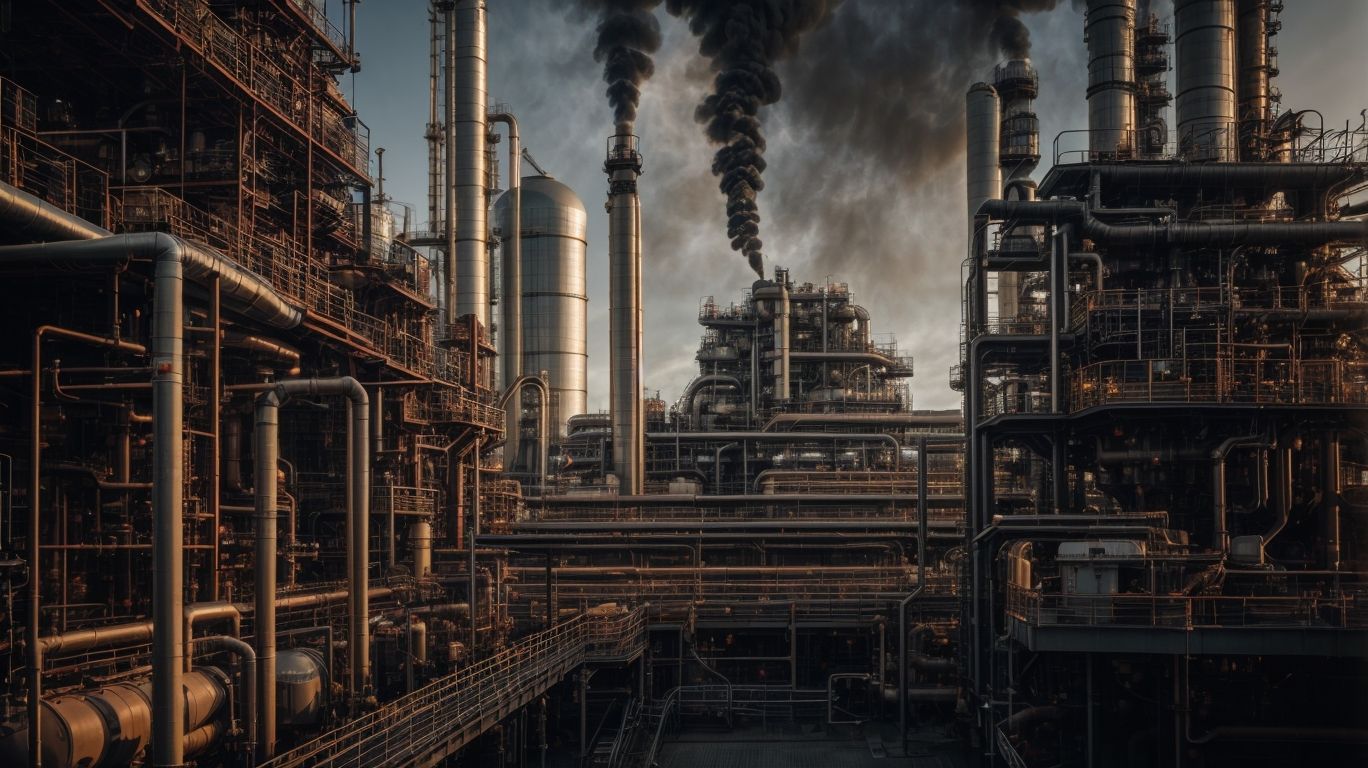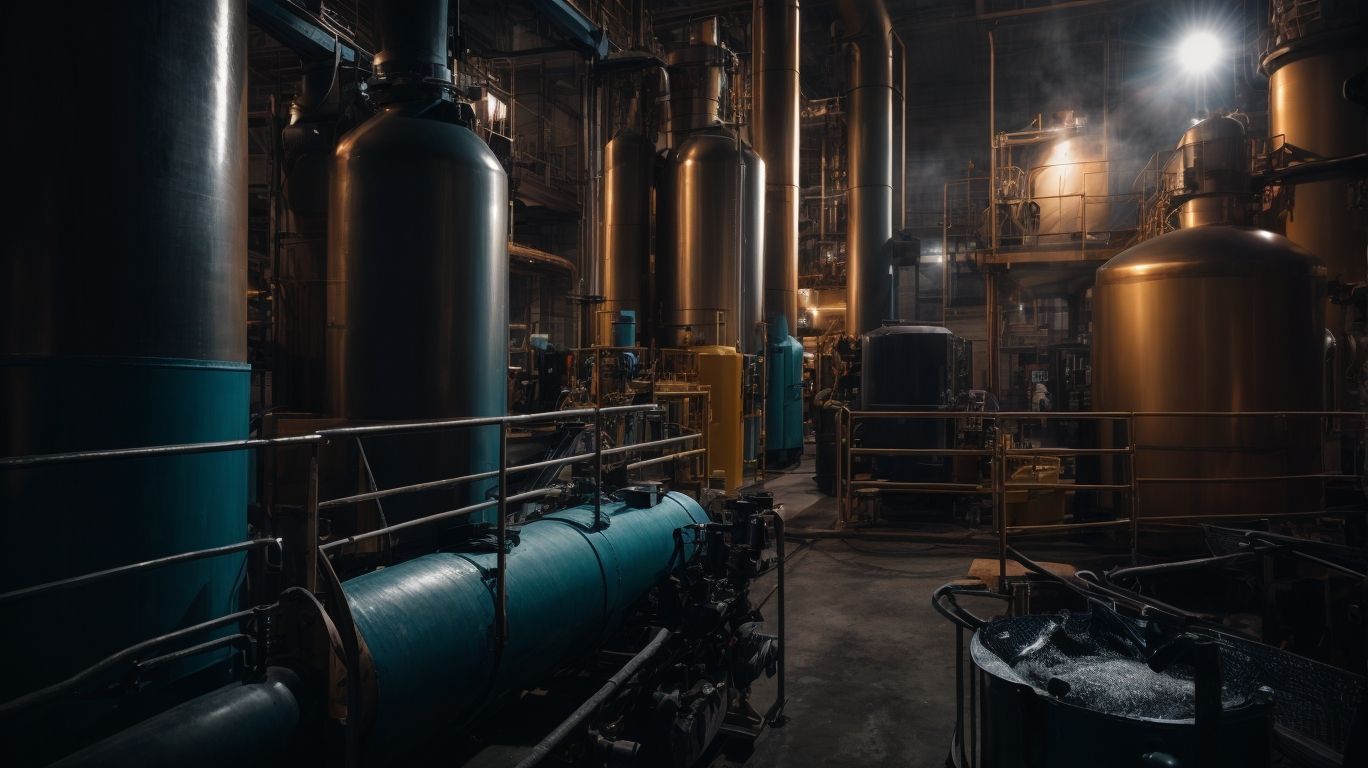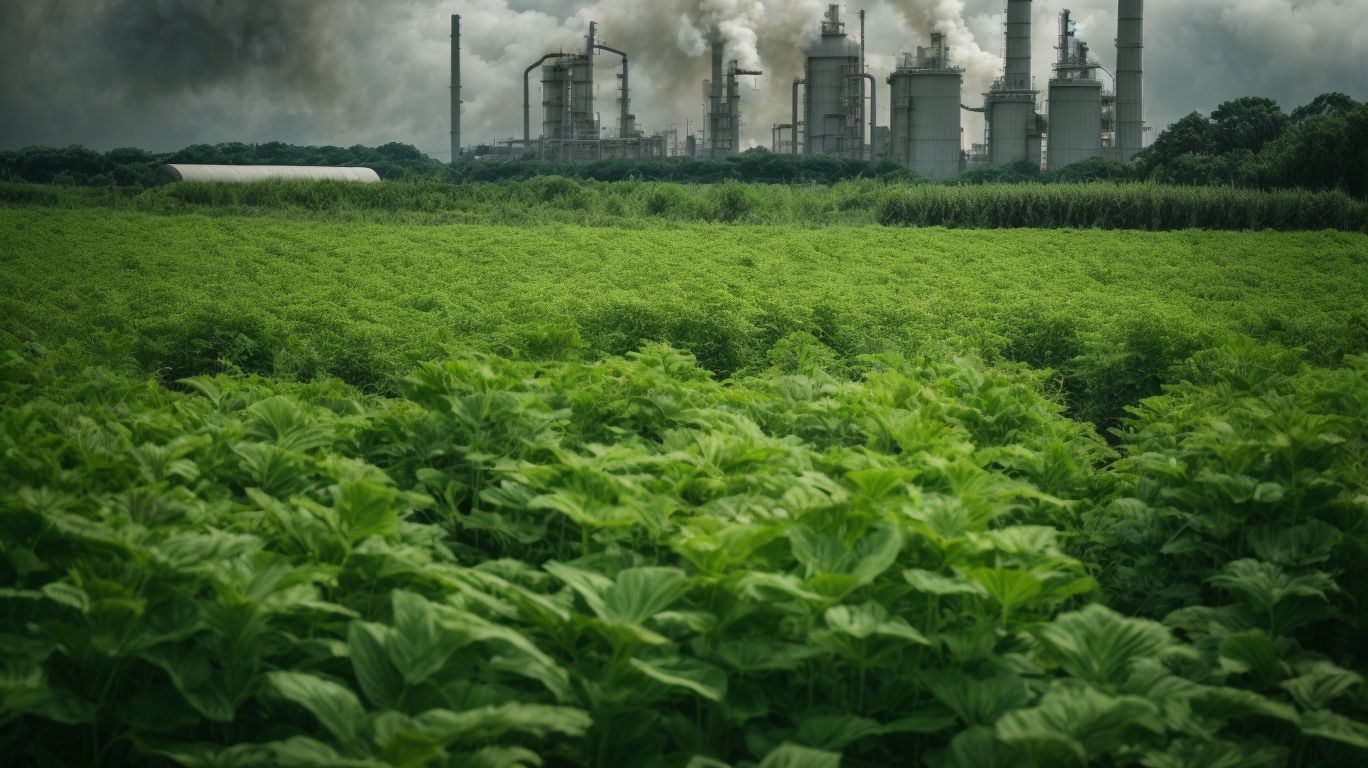Ethylene is a colorless, flammable gas with a sweet odor that plays a significant role in various industries. It is a hydrocarbon compound that is used as a feedstock in the production of numerous products, making it a key component in the global economy. In this article, we will explore the versatile applications of ethylene and its impact on the environment and the future of its production and usage.
Ethylene is most commonly produced through the steam cracking process, which involves the heating of hydrocarbons such as ethane, propane, or naphtha at high temperatures. This process produces a mixture of hydrocarbons, primarily ethylene, and is used in various industries for its unique properties and versatility.
One of the main uses of ethylene is in the production of plastics, where it is used as a monomer in the polymerization process. It is also commonly used as a ripening agent for fruits, as well as a fuel source and chemical intermediate. Ethylene is also used in the production of a wide range of other products, such as detergents, synthetic rubbers, and solvents.
There are three main types of ethylene: polymer-grade ethylene, commodity-grade ethylene, and specialty-grade ethylene. Each type has its own specific use, with varying levels of purity and quality. For example, polymer-grade ethylene is used in the production of high-density polyethylene (HDPE) and specialty-grade ethylene is used in the production of pharmaceuticals and other high-value products.
When handling ethylene, it is important to take proper safety precautions. This includes ensuring proper ventilation, wearing protective gear, and having fire safety measures in place. Ethylene is highly flammable and can pose a safety risk if not handled properly.
The production and usage of ethylene also have environmental impacts. Air pollution, water pollution, and greenhouse gas emissions are some of the major concerns associated with ethylene production. However, advancements in technology and processes are being made to reduce these impacts and make ethylene production more sustainable.
In the future, the production and usage of ethylene are expected to increase, especially in emerging economies. With the growing demand for plastics and other products, there will be a need for more ethylene production. However, efforts are being made to make ethylene production more sustainable and reduce its environmental impact.
In conclusion, ethylene plays a crucial role in various industries and its usage is expected to continue to grow. With advancements in technology and a focus on sustainability, ethylene production and usage can become more efficient and environmentally friendly.
Key Takeaways:
What Is Ethylene?

Photo Credits: Chemicalglossary.Net by Bruce Nelson
Ethylene is a colorless and flammable gas that is extensively utilized in various industries. It is a hydrocarbon with the chemical formula C2H4 and can be found naturally in plants or synthesized for industrial purposes. Its main use is in the production of plastics, such as polyethylene, which is one of the most widely used plastics in the world.
Additionally, ethylene is a crucial ingredient in the production of solvents, detergents, and synthetic fibers. It also plays a significant role in the ripening process of fruits.
Fun Fact: Did you know that ethylene is responsible for the distinct aroma of ripe fruits like bananas and apples?
How Is Ethylene Produced?

Photo Credits: Chemicalglossary.Net by Douglas Martinez
Ethylene, a versatile chemical compound, is produced through a process known as steam cracking. Here are the steps involved in ethylene production:
- Preheating: Feedstock, typically natural gas or naphtha, is preheated to a high temperature.
- Cracking: The preheated feedstock is then fed into a furnace where it undergoes thermal cracking, breaking down hydrocarbon molecules.
- Quenching: The cracked feedstock is rapidly cooled using water or oil to stop the cracking reaction.
- Separation: The resulting mixture is separated into different components, with ethylene being one of them.
- Purification: Ethylene is further purified to remove impurities such as acetylene and other byproducts.
- Compression: The purified ethylene is compressed to increase its density for storage and transportation.
To enhance ethylene production efficiency, industry experts suggest optimizing feedstock composition, improving heat transfer, and implementing advanced catalysts.
What Are the Uses of Ethylene?

Photo Credits: Chemicalglossary.Net by Nicholas Lopez
Ethylene is a highly versatile and widely used compound, with a multitude of applications in various industries. In this section, we will explore the diverse uses of ethylene and its significance in different sectors. From its role in the production of plastics to its use as a ripening agent for fruits, we will examine the various ways in which ethylene is utilized. Additionally, we will delve into its applications as a fuel source and a chemical intermediate, highlighting its importance in the modern world.
1. Production of Plastics
Plastics are produced using ethylene, a versatile chemical compound derived from petroleum. The production process involves several steps:
- Cracking: Petroleum is heated to high temperatures to break it down into smaller molecules, including ethylene.
- Purification: The ethylene is purified to remove impurities and ensure its quality.
- Polymerization: Ethylene molecules are chemically bonded together to form long chains, creating polymer resins.
- Processing: The polymer resins are melted and shaped into various plastic products through processes like extrusion or injection molding.
- Finishing: The finished plastic products undergo additional treatments like cooling, trimming, and packaging.
This process allows for the mass production of plastic items that are used in various industries, including packaging, construction, automotive, and electronics.
2. Ripening Agent for Fruits
Ripening agents, such as ethylene, are commonly used to accelerate the ripening process of fruits. Here are the steps involved in using ethylene as a ripening agent for fruits:
- Ensure a controlled ripening environment, such as a ripening room or chamber.
- Place the unripe fruits in the designated area.
- Introduce ethylene gas into the environment.
- Maintain the appropriate temperature and humidity levels.
- Monitor the ripening process regularly.
- Remove the ripe fruits from the environment to prevent overripening.
Historically, the use of ethylene as a ripening agent for fruits dates back to ancient civilizations, where fruits were stored in specific chambers with ethylene-producing fruits to expedite ripening. Today, this practice continues to be an essential tool in the fruit industry to ensure a consistent supply of ripe fruits throughout the year.
3. Fuel Source
Ethylene is a valuable fuel source in various industries due to its high energy content and combustible nature. It plays a crucial role in processes such as power generation, heating, and transportation. Ethylene can be used in engines to produce heat or converted into electricity, making it a versatile resource for meeting energy demands. Its adaptability as a fuel source also allows for its use in various sectors, highlighting its widespread importance in the energy industry.
4. Chemical Intermediate
Ethylene is a crucial component in the production of various chemicals, making it a key application as a chemical intermediate. It serves as a building block for the creation of numerous products and is widely used in industries.
One of its main uses is in the production of plastics, such as polyethylene, which are commonly used in packaging and construction. Furthermore, it is an essential element in the manufacturing of solvents, adhesives, detergents, and synthetic fibers. The versatility of ethylene as a chemical intermediate makes it a vital ingredient in the production of a wide range of products across multiple sectors.
What Are the Different Types of Ethylene?

Photo Credits: Chemicalglossary.Net by Jeremy Jackson
Ethylene is a highly versatile chemical compound that is widely used in various industries for its unique properties and applications. In this section, we will discuss the different types of ethylene and their specific uses. From polymer-grade ethylene used in the production of plastics to commodity-grade ethylene used in refrigeration and specialty-grade ethylene used in the healthcare industry, each type has its own distinct characteristics and purposes. Let’s dive into the world of ethylene and its various forms.
1. Polymer-grade Ethylene
Polymer-grade ethylene is a high-quality form of ethylene that is primarily used in the manufacturing of plastics and synthetic materials. To obtain this high-quality ethylene, the following steps are typically involved:
- Feedstock selection: Ethylene is usually derived from hydrocarbon feedstocks, such as natural gas or crude oil.
- Feedstock cracking: The selected feedstock undergoes a process called cracking, where high temperatures and pressure are applied to break down the hydrocarbon molecules into smaller components, including ethylene.
- Purification: The cracked mixture is then purified to remove impurities and other unwanted compounds, leaving behind a concentrated stream of ethylene.
- Fractionation: The purified ethylene is further separated from other hydrocarbons through a process called fractionation, where different components are separated based on their boiling points.
- Compression: The ethylene gas is compressed to increase its density, making it easier to transport and store.
- Quality control: Before being sold as polymer-grade ethylene, the product undergoes rigorous testing to ensure it meets the specified purity and composition requirements.
Polymer-grade ethylene plays a vital role in the production of various plastic products, including packaging materials, automotive components, and construction materials. Its high purity and consistent quality make it an essential resource in the plastics industry.
2. Commodity-grade Ethylene
Commodity-grade ethylene is a type of ethylene that is produced on a large scale and utilized in various industries. Here are the steps involved in the production and usage of commodity-grade ethylene:
- Cracking: Ethane or naphtha is heated to high temperatures in a cracking furnace, breaking down the hydrocarbon molecules into smaller fragments, including ethylene.
- Purification: The resulting mixture is cooled and put through a purification process to eliminate impurities and other by-products.
- Liquefaction: Ethylene is then compressed and transformed into a liquid state for storage and transportation.
- Usage: Commodity-grade ethylene is used as a raw material for the production of various plastics, such as polyethylene, which is widely used in packaging, construction, and automotive industries.
- Other Applications: It is also utilized as a starting material for the synthesis of other chemicals, such as ethylene oxide, ethylene glycol, and vinyl chloride.
3. Specialty-grade Ethylene
Specialty-grade ethylene is a specific type of ethylene used in various industries for specialized applications. Here are the steps involved in producing and utilizing this specialized ethylene:
- Feedstock Selection: High-quality hydrocarbons, such as natural gas or crude oil, are carefully chosen for the production of specialty-grade ethylene.
- Cracking Process: The selected feedstock undergoes a cracking process, which involves breaking down the hydrocarbons into smaller molecules, including ethylene.
- Purification: The resulting ethylene is then purified through processes like distillation and filtration to remove impurities and ensure high purity.
- Specialized Uses: Specialty-grade ethylene plays a crucial role in industries such as healthcare, electronics, and specialty chemicals, where it is used for applications like sterilization, semiconductor manufacturing, and the production of specialty polymers.
Specialty-grade ethylene is essential in enabling advanced technologies and innovative products across various sectors.
What Are the Safety Precautions When Handling Ethylene?

Photo Credits: Chemicalglossary.Net by George Campbell
While ethylene is a highly versatile and useful chemical compound, it is important to handle it with caution due to its flammable and potentially hazardous properties. In this section, we will discuss the necessary safety precautions that must be taken when working with ethylene. From proper ventilation to the use of protective gear, we will explore the various ways to minimize the risks associated with handling this compound. Additionally, we will also cover important fire safety measures to ensure the safe handling of ethylene in industrial settings.
1. Proper Ventilation
Ensuring proper ventilation is crucial when handling ethylene to prioritize the safety of individuals and prevent potential hazards. To achieve this, follow these steps:
- Assess the work area: Determine if the area has sufficient ventilation systems in place.
- Inspect ventilation equipment: Regularly check the ventilation equipment to confirm it is functioning properly and not obstructed.
- Maintain airflow: Keep doors and windows open, if possible, to promote airflow and decrease the concentration of ethylene.
- Use exhaust fans: Install and utilize exhaust fans to eliminate any accumulated ethylene gas in the workspace.
- Monitor air quality: Consistently monitor the air quality in the area using appropriate testing equipment to ensure ethylene levels remain within safe limits.
2. Protective Gear
Workers handling ethylene must wear proper protective gear to ensure their safety. Here is a list of steps to follow when using protective gear:
- Wear gloves made of materials resistant to chemicals, such as neoprene or nitrile.
- Put on safety goggles to protect your eyes from potential splashes or spills.
- Wear a chemical-resistant apron or suit to shield your skin from direct contact with ethylene.
- Use a respirator or mask specifically designed for chemical protection to avoid inhaling ethylene vapors.
- Ensure that all 2. protective gear fits properly and is in good condition before use.
3. Fire Safety Measures
- Proper Ventilation: Ensure that the area where ethylene is stored or used has adequate ventilation to prevent the build-up of flammable vapors.
- Protective Gear: Wear appropriate personal protective equipment, such as gloves and goggles, to protect against potential hazards.
- Have fire extinguishers readily available and ensure that all employees are trained in their proper use. Install fire alarm systems and smoke detectors in areas where ethylene is handled.
Pro-tip: Regularly inspect and maintain fire safety equipment to ensure its effectiveness in case of emergencies.
What Are the Environmental Impacts of Ethylene?

Photo Credits: Chemicalglossary.Net by Gregory Rodriguez
Ethylene is a widely used chemical compound that has a variety of applications in different industries. However, its widespread use also raises concerns about its potential environmental impacts. In this section, we will discuss the various ways in which ethylene can contribute to air and water pollution, as well as its role in greenhouse gas emissions. By understanding these environmental impacts, we can better assess the sustainability of using ethylene in various industries.
1. Air Pollution
Air pollution is a major concern linked to the production and use of ethylene. The process of manufacturing ethylene involves burning fossil fuels, which releases harmful substances into the air. These emissions from ethylene plants contribute to the formation of smog and the release of greenhouse gases, which can have negative impacts on human health, such as respiratory and cardiovascular problems. Furthermore, these pollutants also contribute to environmental damage and climate change.
To address air pollution, ethylene producers should implement cleaner technologies, enhance their emission control systems, and invest in renewable energy sources to power their operations.
2. Water Pollution
Water pollution is a major environmental concern related to the production and use of ethylene. The production process of ethylene results in the discharge of various pollutants into water sources. These pollutants can include organic solvents, heavy metals, and other harmful chemicals. When these substances enter water bodies, they can cause harm to aquatic life and disrupt ecosystems. Additionally, they can contaminate sources of drinking water, posing health risks to humans.
It is essential for ethylene production industries to implement effective wastewater treatment and management systems to reduce water pollution and safeguard the environment.
3. Greenhouse Gas Emissions
Greenhouse gas emissions from ethylene production and usage have a significant impact on the environment. Therefore, it is crucial to take necessary steps to mitigate these emissions. Here are some measures that can be taken to reduce greenhouse gas emissions associated with ethylene production:
- Incorporate energy-efficient technologies and processes in ethylene production.
- Utilize carbon capture and storage methods to capture and store emissions.
- Promote the use of renewable energy sources in ethylene production.
- Enhance the efficiency of transportation and distribution systems to minimize emissions during product transport.
- Invest in research and development to create cleaner and more sustainable production methods for ethylene.
By implementing these measures, the ethylene industry can play a role in reducing greenhouse gas emissions and mitigating the effects of climate change.
What Is the Future of Ethylene Production and Usage?

Photo Credits: Chemicalglossary.Net by Steven Clark
The demand for ethylene, a versatile chemical compound, has been steadily growing in various industries. As we look towards the future, it is important to understand the current and potential applications of ethylene, as well as the advancements in technology that could impact its production and usage. In this section, we will analyze the regional markets for ethylene, explore its diverse application areas, discuss the latest technological developments, and take a closer look at the future outlook for the industry.
Regional Market Analysis
The assessment of ethylene production and usage requires a thorough understanding of regional market analysis. This involves examining the demand, supply, and growth potential of ethylene in specific regions. Various factors such as population, industrial development, and economic conditions can greatly impact the dynamics of regional markets. For instance, the Asia-Pacific region is projected to dominate the ethylene market due to rapid industrialization and urbanization. North America and Europe also hold significant shares in the market.
Understanding regional market trends is essential for strategic planning, making investment decisions, and identifying growth opportunities in the ethylene industry. Market research reports and industry analysis provide valuable insights into regional markets and their potential for ethylene production and usage.
Application Areas
Ethylene has a wide range of application areas across various industries. Here are some key sectors where ethylene is used:
- Plastics production: Ethylene is a crucial component for manufacturing various types of plastics.
- Ripening agent for fruits: Ethylene is used to accelerate the ripening process of fruits.
- Fuel source: Ethylene can be converted into ethylene oxide, which is used as a fuel source.
- Chemical intermediate: Ethylene serves as a building block for the production of various chemicals.
Technological Advancements
Technological advancements in ethylene production and usage have greatly improved efficiency, safety, and environmental impact. These advancements include:
- New catalysts: More efficient catalysts have increased ethylene production rates and reduced energy consumption.
- Advanced process control systems: Automation and data analytics have enhanced process efficiency and quality control, resulting in higher yields and less downtime.
- Alternative feedstocks: Research on alternative raw materials, such as biomass and waste, has the potential to decrease reliance on fossil fuels and carbon emissions.
- Green technologies: Implementation of cleaner technologies, like carbon capture and utilization, can help mitigate environmental impacts associated with ethylene production.
These technological advancements are essential for the sustainable growth of the ethylene industry, ensuring a more efficient and eco-friendly production process.
Industry Outlook
The industry outlook for ethylene is looking promising, with a strong emphasis on regional market analysis, application areas, technological advancements, and overall industry growth.
In terms of regional market analysis, the demand for ethylene is projected to rise in emerging economies such as China and India.
Ethylene has various application areas, including plastics production, fruit ripening, fuel source, and chemical intermediate.
Thanks to technological advancements, there have been significant improvements in ethylene production and usage, leading to increased efficiency and sustainability.
Overall, the outlook for the ethylene industry is positive, with ongoing developments and advancements in various sectors.
Frequently Asked Questions
What are the key applications of ethylene in the automotive sector?
Ethylene has multiple uses in the automotive industry, primarily as an antifreeze agent and coolant in automotive engines. It also serves as a raw material for producing polyester fibers used in textiles for car interiors.
How does ethylene contribute to the growth of the packaging industry?
Ethylene is a fundamental building block in the production of polyethylene terephthalate (PET) resins, which are widely used in bottles, containers, and packaging materials. This has led to a rise in demand for ethylene in the packaging industry.
What role does ethylene play in the healthcare sector?
Ethylene is used in the sterilization of medical equipment, including personal protective equipment, such as masks and gloves. It is estimated that 20 billion medical devices are sterilized with ethylene oxide each year, making it an essential tool in preventing the spread of diseases and infections.
What are the key factors driving the demand for ethylene?
The demand for ethylene is primarily driven by the growth of the textile and apparel industry, the packaging industry, and the automotive sector. Economic factors, such as overall economic growth and industrial developments, also contribute to the rising demand for ethylene.
How does the market scenario of ethylene look in the future?
According to a market research firm, the global market for ethylene is expected to experience a compound annual growth rate of 4.5% from 2020 to 2027. This is due to the versatile applications of ethylene in multiple industries and its increasing use in everyday products.
What are the key procedures and regulations in place for handling ethylene?
Due to its toxic and flammable nature, strict industry procedures and regulations are in place for the safe handling and disposal of ethylene. This includes safety measures in production, transportation, and storage, as well as environmental regulations for its use in industrial production.
